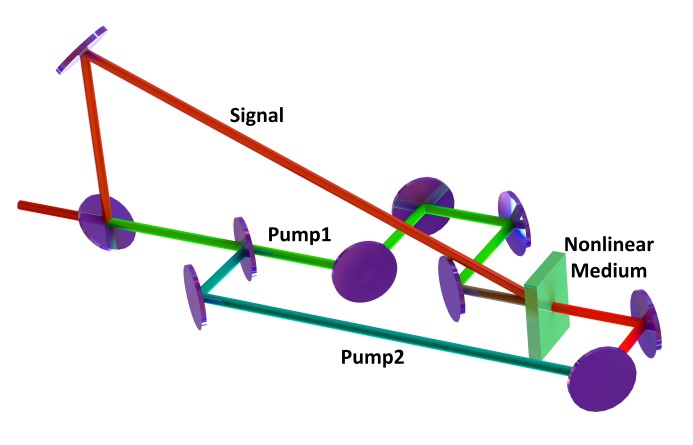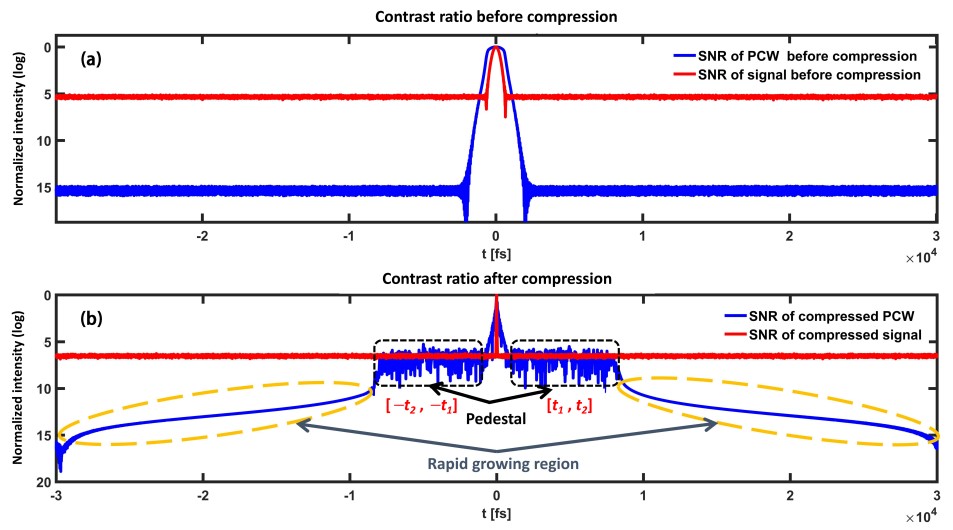A crucial parameter of ultrashort high peak power laser systems is the temporal contrast ratio, which is defined as the intensity ratio of the main pulse to the background noise. A poor contrast ratio indicates strong pre-pulses or a pedestal before the main pulse. Intense pre-pulses or background noise can modify or even destroy the target structure, generate pre-plasma, and as a result, change the interaction mechanism. For a petawatt laser system, a typical temporal contrast ratio in the range of 1011–1012 is required. Unfortunately, without the application of any pulse cleaning technique, the temporal contrast of the focal spot is several orders of magnitude lower than the required level.
A number of techniques have been invented and investigated experimentally over the past 20 years, including the application of saturable absorbers, a nonlinear Sagnac interferometer, a double CPA scheme, nonlinear birefringence, cross-polarization wave generation (XPW), a low-gain optical parametric amplification (OPA), and self-diffraction (SD) process, etc. However, these techniques are still either theoretically or technically limited, especially in engineering applications, which requires the development of novel methods in contrast improvement.
A research team in the Key Laboratory of High Power Laser and Physics, Shanghai Institute of Optics and Fine Mechanics of the Chinese Academy of Sciences (CAS) recently proposed a pulse cleaning technique and numerically investigated its potential in femtosecond petawatt laser systems. This result was published in IEEE Photonics Journal.
The proposed technique is based on phase-conjugate wave generation (PCW) in the DFWM process, which is an instantaneous third-order nonlinear effect. The numerical simulations were carried out focusing on the contrast enhancement capability, gain bandwidth, and energy conversion efficiency for systematic evaluation of the performance as pulse cleaners. The contrast ratio of the PCW was roughly cubic that of the input fields. When the PCW was compressed, a pedestal noise within a region of a few ps was noticed. The origin and the removal method of this pedestal were studied.
Additionally, a systematical requirement for the input pulse width in the DFWM process to maintain a minimal compressible pulse width was provided for laser systems with a wide range of bandwidths.
Furthermore, the simulation results verified that a considerably large efficiency bandwidth product and an excellent contrast enhancement capacity could be realized by finding a balance between each physical effect and input parameter.
The technique based on PCW generation will shed new lights on femtosecond high power laser systems to realize high temporal-contrast, broad gain bandwidth and large energy conversion efficiency.
This work was supported by the National Natural Science Foundation of China (NSFC) and the International Partnership Program of Chinese Academy Of Sciences.

Fig. 1. Schematic image of the PCW generation by backward DFWM process(Image by SIOM).

Fig. 2. Contrast ratios of the PCW and signal before and after compression(Image by SIOM).
Article website: https://ieeexplore.ieee.org/document/8693512
Contact:
Mr. Cao Yong
General Administrative Office
Shanghai Institute of Optics and Fine Mechanics, CAS
Email: caoyong@siom.ac.cn







